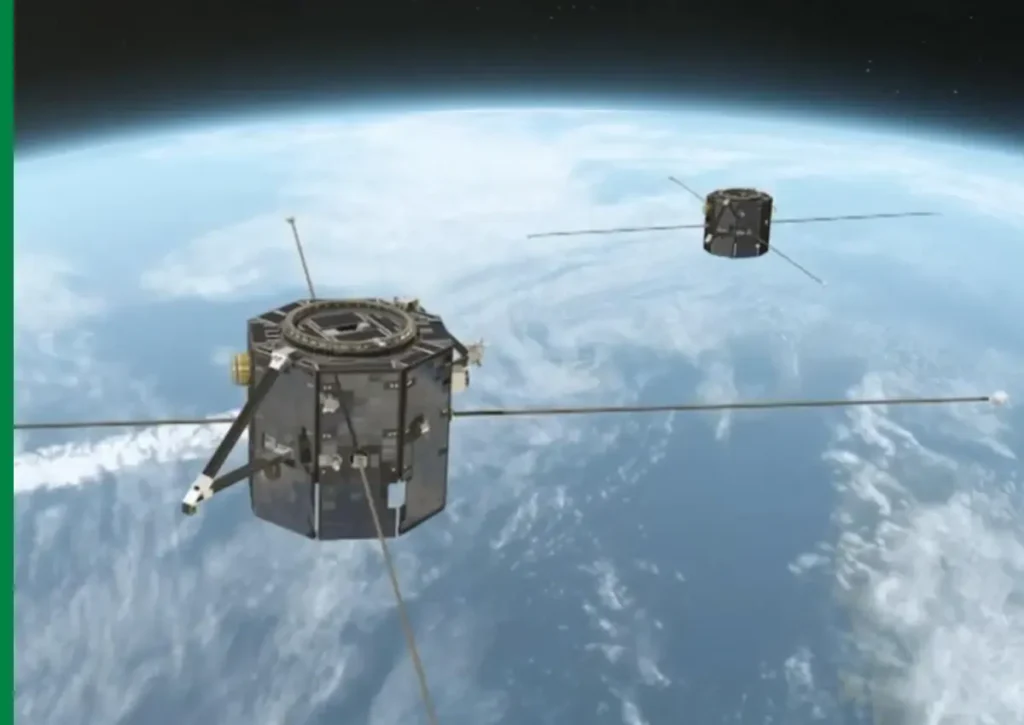In a mission designed to decode the invisible forces that shape Earth’s near-space environment, NASA has launched a pair of identical satellites under its TRACERS mission — short for Tandem Reconnection and Cusp Electrodynamics Reconnaissance Satellites. The twin spacecraft lifted off on July 23, 2025, aboard a SpaceX Falcon 9 rocket from Vandenberg Space Force Base in California. Their destination: the dynamic magnetic boundaries at the edge of Earth’s atmosphere, where solar storms often sneak in.

TRACERS is NASA’s latest effort to understand how magnetic energy from the Sun interacts with Earth’s magnetic field — and more importantly, how that interaction can disrupt satellites, power grids, communication systems, and everyday life on the ground. The satellites will focus on the polar cusps, two funnel-shaped regions near Earth’s magnetic poles where solar particles gain unusual access to our planet’s otherwise protective magnetic field.
This is the first mission of its kind to repeatedly sample this mysterious region in near-real time. Unlike earlier one-shot observations, TRACERS will orbit Earth in tandem, separated by as little as 10 seconds, capturing thousands of instances of magnetic reconnection — a process where magnetic field lines break and reconnect, releasing energy powerful enough to trigger geomagnetic storms.
The launch was briefly delayed by a regional power outage at the Los Angeles Air Route Traffic Control Center, pushing the liftoff from July 22 to July 23. The delay was a precautionary move, ensuring safe coordination for air traffic during rocket launch operations. Nevertheless, the mission successfully lifted off at 11:13 a.m. Pacific time, with the Falcon 9 first stage returning safely to Earth after deployment of the payloads.
NASA’s TRACERS team confirmed that both satellites were deployed and are in good health. Over the next four weeks, engineers will commission the spacecraft and calibrate their instruments. Once fully operational, the mission will enter its primary one-year data collection phase.
Scientists behind the TRACERS mission are hopeful that the data will shed light on one of the most elusive and explosive phenomena in space weather: magnetic reconnection. While reconnection has been observed before — most notably by NASA’s Magnetospheric Multiscale Mission — TRACERS offers a new opportunity to see how reconnection behaves in Earth’s cusp region, where energy transfer is most volatile.
The implications go far beyond academic curiosity. Magnetic reconnection is believed to be the trigger for many solar storm–related disturbances on Earth. In recent years, such storms have disrupted GPS systems, forced airline rerouting, interrupted radio communications, and even threatened astronauts aboard the International Space Station. As the world becomes increasingly dependent on satellite infrastructure, understanding how and when these storms form has become a national and global priority.
The TRACERS mission is led by Principal Investigator David Miles from the University of Iowa and is part of NASA’s Small Explorer Program. The spacecraft themselves are about the size of a large household appliance and are equipped with advanced sensors to detect charged particles, electric fields, and magnetic fluctuations.
The twin satellites will fly in formation, essentially offering two vantage points of the same event — like watching a lightning storm from two sides of a mountain range. This dual perspective is critical because magnetic reconnection occurs rapidly and across small regions. Without such synchronized observation, scientists would be left with incomplete snapshots. With TRACERS, they hope to capture the full story.
The spacecraft will be positioned in high-inclination, low-Earth orbits to pass regularly over the polar cusps. NASA estimates the satellites will observe over 3,000 reconnection events during their first year. This immense dataset is expected to revolutionize how researchers understand the chain of events that leads to geomagnetic storms.
Joining TRACERS on the Falcon 9 launch were several other NASA payloads, including a group of small experimental satellites under the CubeSat Launch Initiative. These included Athena, which will test advanced propulsion; PExT, a materials science experiment; and REAL, a risk-reduction satellite for future missions. But TRACERS remains the scientific centerpiece, marking NASA’s first mission dedicated entirely to exploring the electrodynamics of Earth’s cusp region.
The mission also dovetails with broader heliophysics efforts, particularly as NASA and other agencies brace for what scientists expect to be an unusually active solar maximum in the coming years. The Sun’s 11-year cycle is ramping up, and with it comes an increase in solar flares and coronal mass ejections — both of which can trigger intense geomagnetic activity.
Earlier this year, a powerful geomagnetic storm disrupted radio communications across North America and grounded high-altitude flights. In 2024, a similar event caused nearly $500 million in economic damage due to power fluctuations, crop monitoring failure, and timing signal errors. These incidents underscore the importance of understanding how solar activity infiltrates our planet’s magnetosphere.
TRACERS is expected to play a key role in building better forecasting tools for space weather. Just as meteorologists predict thunderstorms, scientists one day hope to predict solar storms with similar accuracy. By observing the energy exchange at Earth’s magnetic boundaries in detail, TRACERS will help fill in one of the most important missing pieces of that forecasting puzzle.
NASA’s heliophysics division sees this mission as a cornerstone of future planetary protection efforts. The agency’s long-term goals include not only protecting Earth-based systems but also ensuring the safety of astronauts during future Moon and Mars missions, where exposure to solar storms could be far more dangerous.
The launch and mission were coordinated by NASA’s Launch Services Program under its Venture-Class Acquisition of Dedicated Rideshare (VADR) initiative, which aims to provide flexible, cost-effective rides for small payloads. The Falcon 9’s flawless launch and booster recovery marked another milestone in the growing collaboration between NASA and commercial space providers.
With its instruments calibrated and mission clock ticking, TRACERS will soon begin its one-year scientific campaign, soaring above Earth’s poles in search of answers hidden in bursts of invisible energy. As the spacecraft begin their tandem journey through the planet’s magnetic funnel, they carry with them the promise of protecting our increasingly technological world from the unpredictable power of the Sun.



